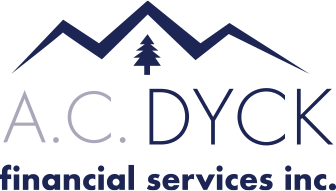Decisions, Decisions, Decisions
After many years of hard work saving and investing money, it is typical to turn your investments into income. Sometimes it replaces your total paycheck and sometimes it supplements other income. This week’s blog is a story about clients of mine, Alejandro and his wife Elena de la Vega (not their real names), who sold their family business, a sole proprietorship, after a 40-year run. They had done quite well in business and wanted to invest the proceeds to provide themselves with a nice income while preserving their capital. They wanted something fairly simple that paid them monthly while being very liquid.
The amount Mr. and Mrs. de la Vega had to invest was 1,250,000.00. What choices did I show them and what they do?
First, we looked at guaranteed investments.
At the time of their sale in 2019, the best that they could get was 2.3%, paid monthly, locked in for 5 years. This investment would pay a monthly income of $2,397.83 per month.
Second, we looked at investing into an investment portfolio of 3 different mutual funds. Two funds paid a distribution of 7 cents/unit per month, and the 3rd paid 2 cents/unit per month. Which fund paid the best yield while having a low-medium risk as Alejandro and Elena did not want to put their money at much risk in the market? All three funds were top funds as rated by Morningstar Canada; an unbiased 3rd party that ranks all mutual funds in Canada.
Showing the math: To determine the monthly income: $’s to be invested divided by unit price = # of units held. # of units owned x cents/unit/month = monthly income paid.
Calculation of Annual Yield: monthly income x 12 = annual income. Annual income/amount of money invested = yield expressed as a percentage.
Fund #1
At the time of the investment, the unit value was $23.17. The monthly income provided by this fund was and continues to be $3776.44.
The yield from this fund is 3.6%
Fund #2
At same time, the unit value of the second fund was $11.38. The monthly income provided by this fund was and continues to be $7688.93.
The yield from this fund is 7.4%
Fund #3
At the time of the investment, the unit value was $4.41. The monthly income provided by this fund was and continues to be $5668.93.
The yield from this fund is 5.4%
Conclusion: When we look at the history of these over the past 10 years, we can see that 1) the amount paid (the distribution rate) on each of these funds have not changed for over 10 years. 2) Each of these funds have had a capital gain growth and 3) each fund was taxed more preferentially than the GIC.
Al’s Nuggets:
- Not all mutual funds are high risk!
- Taxation is a big deal. Maximize your TFSA!
- This story, which is true, resulted in the clients splitting up their investment among these 3 funds. They liked fund #1 because that fund had a focus on capital growth over income! They liked the other 2 funds for the income they provided. 3 funds, 2 different fund managers, 3 different philosophies = lots of diversification!
- There is more going on behind the scenes which a 1-page blog cannot get into. Always talk to your financial advisor to get the full story behind their recommendations. Full disclosure is important because you worked hard for your money.
- You can use these same principles for any investment – even if you own rental property. What you really earn after-tax, after-expenses should be calculated in advance before taking the plunge!
